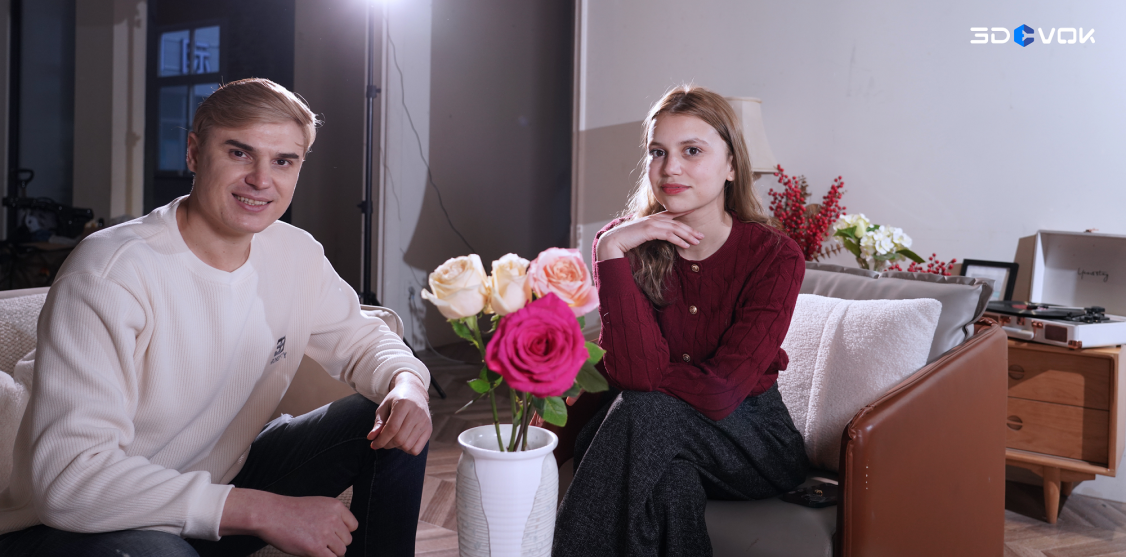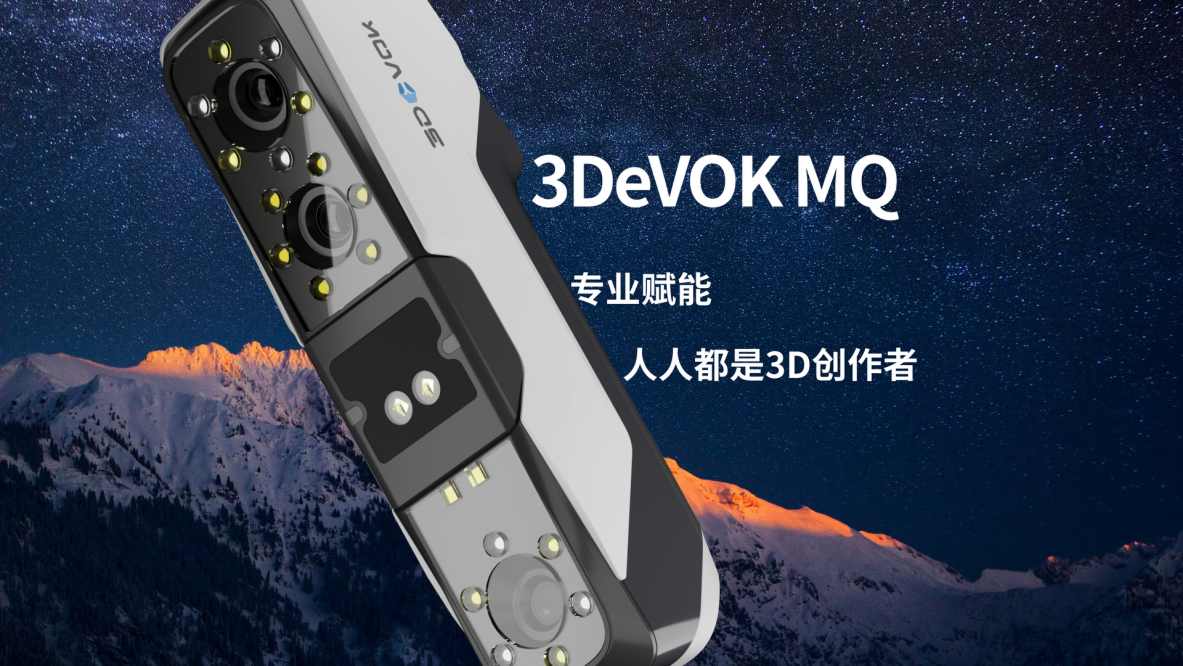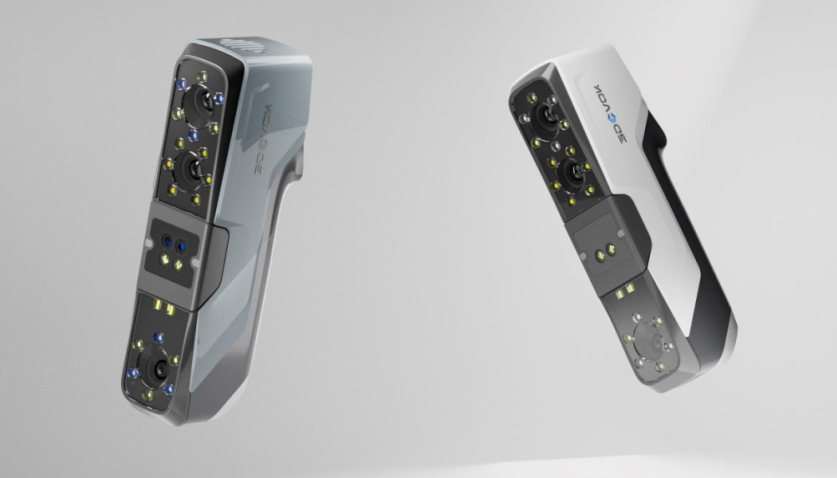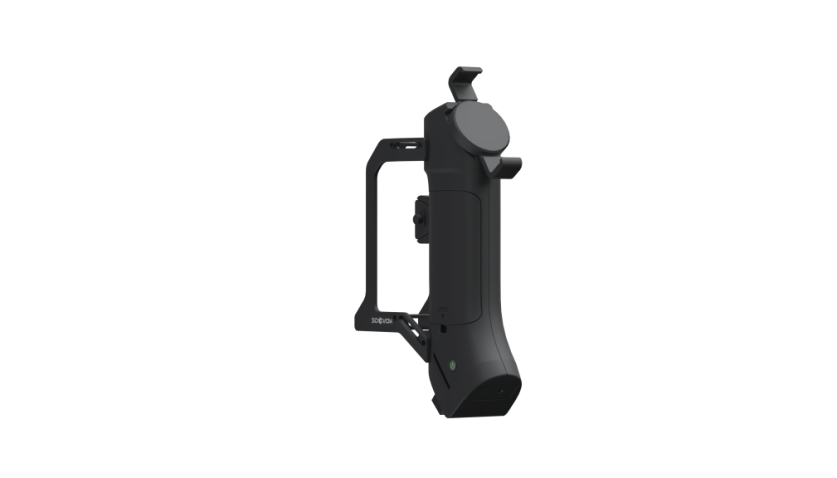How to Choose Your First Professional 3D Scanner?
11/07/25
As the boundary between the physical and digital worlds grows increasingly blurred, 3D scanning has become a vital bridge connecting the two. It enables us to quickly capture the three-dimensional shape of objects and apply this data to design, manufacturing, education, or artistic creation. Whether you’re a maker, an educator, or a small business, modern 3D scanners make it easy to accomplish tasks that once required a professional team. Today, 3D scanning is more than just a specialized tool — it’s a way to bring ideas to life more effortlessly.

- What are the real differences between photogrammetry, structured light, and laser scanning — the three most common 3D scanning technologies?
- Why are some entry-level scanners inexpensive, yet their actual performance often disappointing?
- How much accuracy do I really need? How big of a difference does it make between 0.2 mm and 0.08 mm?
- Is it possible to find a scanner that combines professional-grade precision with user-friendly operation?
With these questions in mind, this article will explore mainstream technologies, core principles, accuracy requirements, key purchasing factors, and representative models — helping you build a clear and logical approach to choosing your first 3D scanner.
Comparison of Mainstream 3D Scanning Technologies
There are various approaches to achieving 3D scanning, but the mainstream technologies can generally be categorized into three types: photogrammetry, structured light scanning (including fringe and speckle structured light), and laser scanning.
Each technology has its own principles, performance characteristics, and ideal application scenarios. The detailed comparison is as follows:
| Technology | Principle | Advantages | Limitations |
| Photo-grammetry | Captures multiple images from different angles; algorithms extract feature points from the photos to reconstruct a 3D model. | Low cost (works with regular cameras or smartphones); suitable for large-scale and outdoor scenes; non-contact measurement. | Strongly dependent on lighting and shooting angles; requires rich surface textures; limited accuracy — not suitable for precision engineering. |
| Fringe Structured Light Scanning | Projects striped (fringe) patterns and calculates depth information based on the deformation of the stripes. | High detail fidelity; supports various light source types; no need for reference markers or targets. | Generates large data volumes; limited scanning area and depth of field; poor material adaptability; highly sensitive to ambient light. |
| Speckle Structured Light Scanning | Projects speckle patterns and calculates depth information based on pattern displacement. | Fast scanning speed; supports dynamic scanning; works well in bright or dark environments (especially with infrared speckle); handles multi-colored and dark surfaces effectively; offers excellent performance for large areas and depth; usually marker-free. | Slightly lower detail fidelity; still limited by reflective or transparent materials. |
| Laser Scanning | Uses laser triangulation or laser array systems to directly capture depth information. | High accuracy (up to 0.02 mm in industrial-grade systems); excellent detail reproduction; wide material adaptability; highly complete data; strong ambient light resistance; can capture color 3D data. | Often requires markers for alignment; relatively high cost; complex system structure. |
In summary: laser scanning provides the most balanced performance in high-precision fields such as industrial manufacturing and scientific research. Structured light scanning offers a good trade-off between speed and portability, making it ideal for medium-sized objects and quick inspection tasks. Although photogrammetry is less accurate, its low cost and high flexibility still make it a great choice for large-scale applications such as cultural heritage documentation and architectural surveying.
Working Principle of a 3D Scanner
Regardless of the technical approach used, a 3D scanner typically goes through the following four core steps to convert a real-world object into a digital model:
1. Optical System
- Light Source: Laser, structured light, blue light, or infrared light is projected onto the surface of the object.
- Reflection Capture: Sensors (cameras or detectors) receive the reflected signals.
- Common Techniques:
– Laser Triangulation: Calculates depth based on the displacement of a light point or line.
– Structured Light Scanning: Uses the deformation of projected stripe patterns to capture surface shape.
– Time-of-Flight (ToF): Determines distance by measuring the round-trip time of light pulses.
– Photogrammetry: Reconstructs 3D geometry by extracting feature points from images taken at multiple angles.
2. Data Acquisition
- Sensors convert the positional information of the reflected light into digital signals.
- Different scanning methods yield raw data with varying levels of accuracy and point density.
3. Data Processing
- Software processes the acquired signals to generate a 3D point cloud.
- The point cloud is a discrete representation of the object’s surface geometry, containing its structural information.
4. Model Reconstruction
- The point cloud is refined through processes such as smoothing, noise reduction, hole filling, and mesh generation.
- The final digital model can be used for inspection, simulation, reverse engineering, or 3D printing.
Understanding “Accuracy Requirements”
When selecting a 3D scanner, accuracy is often the most critical specification. However, many first-time users tend to confuse accuracy with resolution (or fineness).
In short: accuracy determines whether the model is “correct,” while resolution determines whether the model is “detailed.” Although closely related, they focus on different aspects:
– Accuracy: Refers to how closely the scanned result matches the true dimensions of the object, affecting the overall shape and proportional correctness of the model.
– Resolution (or detail capability): Refers to the scanner’s ability to capture and distinguish fine surface features, affecting the richness of surface detail in the model.
Typical Applications for Different Accuracy Levels:
- 5 mm accuracy: Can only reproduce the general shape; suitable for scenarios with low dimensional requirements, such as furniture, sculptures, or cultural exhibits.
- 2 mm accuracy: Sufficient for education, maker projects, rapid prototyping, and general appearance modeling; provides reasonably accurate model appearance.
- 08 mm accuracy: Professional-level precision; suitable for reverse engineering with moderate accuracy requirements (e.g., casing or mechanical part replication), high-quality 3D printing preparation, or digital preservation of artworks.
- 02 mm (20 µm) accuracy or higher: Metrology or inspection-grade level; commonly used for precision part quality control, mold measurement, scientific experiments, or applications requiring extremely tight dimensional tolerances.
Example: When scanning a coin:
– 0.2 mm accuracy can capture the outline and major inscriptions.
– 0.08 mm accuracy can clearly reproduce all fine textures.
– 0.02 mm accuracy is required for mold comparison or dimensional inspection to ensure measurement reliability.
How to Determine the Required Accuracy Level
When choosing a 3D scanner, it is not necessary to pursue “the highest possible accuracy.” The key is to match the scanner’s performance with your actual needs. The following simple guidelines can help you quickly identify the appropriate accuracy range:
- Display and Visualization (≈ 0.3– 5 mm): For artistic creation, educational displays, cultural documentation, or virtual modeling. Only the overall shape needs to be accurate; precise measurements are not required.
- Design, Printing, and Prototyping (≈ 0.1– 2 mm): Suitable when models must fit with other components or for 3D printing, product appearance verification, etc., balancing accuracy and efficiency.
- Precision Assembly and Reverse Engineering (≈ 0.05– 08 mm): Appropriate for part replication, medium-to-high precision surveying, or structural analysis, achieving a balance between usability and professional-level accuracy.
- Metrology and Scientific Applications (≤ 0.02 mm): For extremely high-precision needs such as tolerance analysis, mold inspection, dimensional measurement, or scientific experiments, requiring metrology-grade systems.
Summary:
The key to determining accuracy requirements is asking yourself—do you want to see clearly or measure precisely?
The former focuses on visual detail. The latter demands dimensional correctness. By clarifying your goal, you can find the optimal balance between budget and performance.
Beyond Accuracy: What Else to Consider
Even if a scanner meets your accuracy requirements, it doesn’t necessarily mean it is the right fit for you. The following factors also significantly impact user experience and the quality of results:
– Ease of Use: Does it offer real-time preview, automatic alignment, and a clean, intuitive software interface?
– Material Compatibility: Can it handle black, transparent, or highly reflective surfaces?
– Flexibility: Does it support desktop-fixed scanning, handheld scanning, or even wireless extension?
– Software Ecosystem: Does it include post-processing capabilities such as mesh repair, texture mapping, and multi-format export?
Cost-Effectiveness: Is the price aligned with actual needs, avoiding underpowered devices that fall short or overpowered devices that are underutilized?
Recommended Case: 3DeVOK MQ Laser 3D Scanner
Among many options, the 3DeVOK MQ laser 3D scanner offers an excellent balance of accuracy, stability, and ease of use, making it an ideal choice as a first professional-grade scanner.
1. Core Technologies
- 22-Line Infrared Laser: Compared with traditional single-line or low-line-count laser systems, the denser laser projection delivers more complete point cloud capture and significantly improved detail reproduction. It supports objects of various sizes (starting from 5 cm) and materials, achieving accuracy up to 0.08 mm, suitable for quasi-industrial 3D data acquisition applications.
- Dual-Field Infrared Speckle Projection: Optimized for portrait scanning, human body parts, and medium-to-large objects (≥ 30 cm). It supports high-precision partial scanning as well as fast, ultra-wide-area scanning, with a maximum scanning area of 1,100 mm × 1,000 mm — enabling high efficiency and easy operation.
- Eye Safety & Visual Stealth: Certified Class I laser, with no visible light interference during operation. This makes it ideal for cultural heritage preservation, museum artifact digitization, artwork scanning, virtual exhibitions, and other scenarios where light pollution must be avoided in sensitive environments.
- Marker-Free Scanning: Based on speckle pattern technology, the system does not rely on target markers or manual alignment. It inherently supports markerless tracking and stitching, making it especially suitable for scanning human bodies and carved artworks.
3. User Experience
- Color 3D Scanning: Captures both geometric shape and texture/color information, delivering more realistic and lifelike 3D models.
- Companion Software: 3DeVOK Studio scanning softwaresupports real-time preview, automatic alignment, mesh repair, and multi-format export, enabling beginners to operate with ease.
- Wireless Freedom: Compatible with the 3DeVOK Airgo wireless handle, allowing users to break free from cable limitations and operate flexibly in complex environments.
Application Scenarios
- Education & Research: Plant morphology analysis, experimental teaching, academic studies
- Industry & Manufacturing: Reverse engineering, quality inspection, component measurement
- Cultural Heritage & Creative Industries: Artifact digitization, artwork reproduction, and derivative development
- Medical & Personalized Design: Human body surface capture, customized product development
Your First Professional-Grade Scanner
If you are only exploring the basics of 3D digitization, photogrammetry or structured light solutions may be sufficient. However, when you need reliable results, high accuracy, and a system capable of supporting long-term applications, laser scanning is the right place to start.
Featuring high accuracy (0.08 mm), excellent stability (22-line infrared laser + dual-field infrared speckle), full-color capture, and wireless expansion capability, the 3DeVOK MQ Laser 3D Scanner is an ideal choice that balances cost-effectiveness with professional performance—perfect for both beginners and advanced users.
Want to Learn More About the 3DeVOK MQ Laser 3D Scanner?
Click to visit the product details page and explore more technical specifications and application cases.
Related Articles
View Our Product






